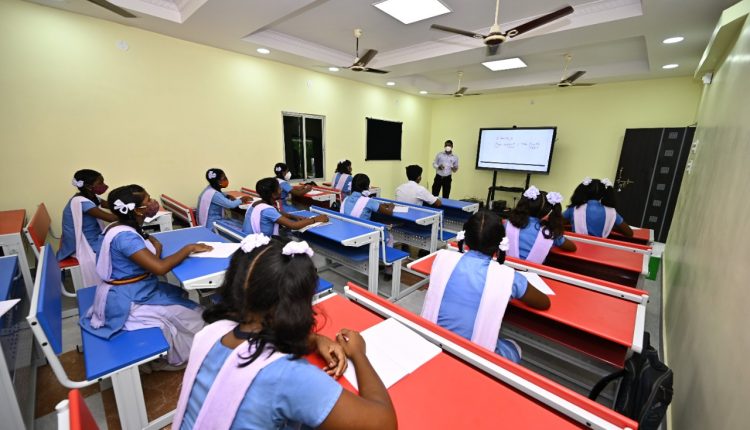NEW DELHI: India has witnessed a recovery in foundational literacy and numeracy (FLN) among school students after a prolonged learning losses during the COVID-19 pandemic, according to the Annual Status of Education Report (ASER) 2024 released on January 28, 2025.
The reading level of Class 5 students in government schools has improved to 44.8% per cent, while the basic reading levels are highest for the Class 3 students enrolled in government schools, in 2024. The government schools are ahead the private schools in terms of recovery after COVID-19, the report suggests.
In the case of basic arithmetic for elementary grades, both government and private schools have shown substantial improvement reaching the highest level in over a decade.
The report has been prepared on a basis of a survey that covered 6.5 lakh children from 605 villages across India.
The ASER survey used the framework of the 2011 census to randomly select 30 villages from each district, and twenty households from each village. Children between the ages of five years and 16 years were assessed for basic reading and arithmetic skills.
Reading proficiency
The reading task of ASER assesses students based on whether a child can read letters, words, a simple paragraph in Class 1 or a story at Class 2 level of difficulty.
In 2018, the ASER reported that 20.9% of Class 3 students of government schools could read a text at a Class 2 level, which dropped to 16.3% in 2022 and recovered to 23.4% in 2024. The fact remains that 76.6% of Class 3 students were unable to read the texts provided in 19 languages.
The Class 5 students were given the same text and one in two students were unable to read it. In 2018, 44.2% of Class 5 students were able to read it, which went down to 38.5% in 2022, but recovered to 44.8% in 2024.
The survey showed that only 67.5% Class 8 students were able to read the Class 2 text.
States that experienced an increase of more than 10 percentage points in reading proficiency between 2022 and 2024 in government schools include Himachal Pradesh, Uttarakhand, Kerala, Uttar Pradesh, Haryana, Odisha, and Maharashtra.
In 2024, Mizoram and Himachal Pradesh witnessed the highest proportions of Class 5 students in government schools who could read the Class 2 level textbooks.
States that saw an increase of over 10 percentage points in this proportion in government schools include Uttarakhand, Uttar Pradesh, Gujarat, and Tamil Nadu.
For Class 8 students in government schools, the reading level rose to 67.5% in the report. In 2022, only 66.2% were able to read well.
The reading level performance of private school students remains unchanged between 2022 and 2024.
government schools in Gujarat, Uttar Pradesh, and Sikkim show improvements, but Punjab, Andhra Pradesh, and Telangana saw a decline.
Arithmetic skills
The students of both government and private schools showed a substantial improvement in basic arithmetic skills such as recognising numbers, subtracting double-digit numbers with borrowing, and dividing three-digit numbers by one digit.
However, two out of three Class 3 students had failed to solve the subtraction problems correctly. Among Class 5 students, the proportion of those who could solve the division problems improved from 27.9% in 2018 to 30.7% in 2024, leaving 70% of the students lagging behind.
Among Class 8 students, improvement in basic arithmetic rose from 44.1% in 2018 to 45.8% in 2024. The assessment method has remained the same since 2007, enabling comparisons over time, the ASER said.
“There is improvement in learning levels as data indicates that schools are receiving directives, training and materials or funds related to strengthening FLN for early grades in primary schools with more than 75% schools surveyed implementing a three-month school readiness programme for incoming Grade 1 children in government schools,” the report said.
Digital literacy
Among students aged 14 to 16 years, 89% have access to smartphones at home. Of this category, 31.4% possess their own phones.
Of the 82% of children who said they used a smartphone, 57% used it for education purpose while 76% said they browse social media on phones.
Of these older teens, 76.9% could set an alarm, 79.3% could browse for information, and 87% students could find a video on a specific topic. Of these, 92.1% could share videos on WhatsApp or Telegram with their friends and family.
Boys were more aware of safety features on their phones than girls, the report noted. “62% knew how to block or report a profile, 55.2% knew how to make a profile private, and 57.7% knew how to change a password,” the report said.
To see the full report, click here.


Comments are closed.